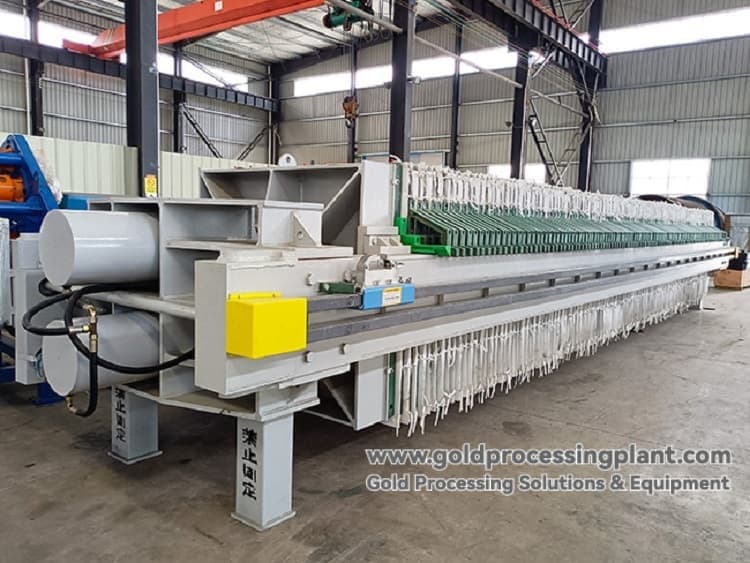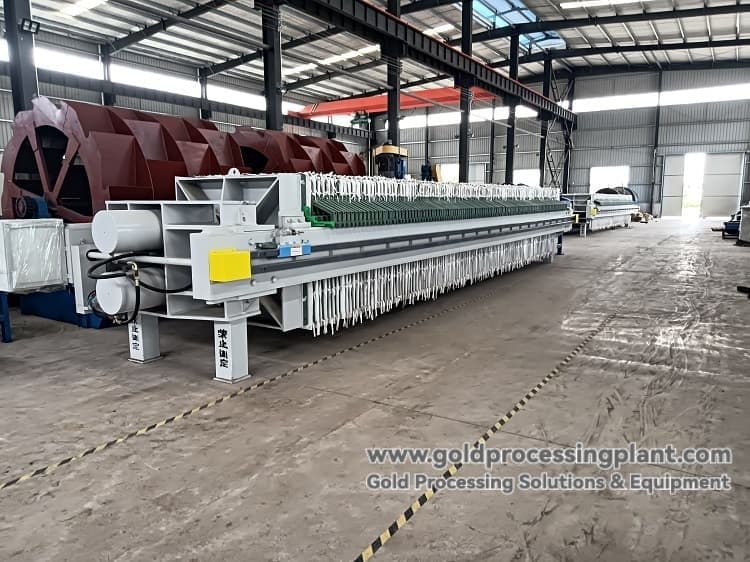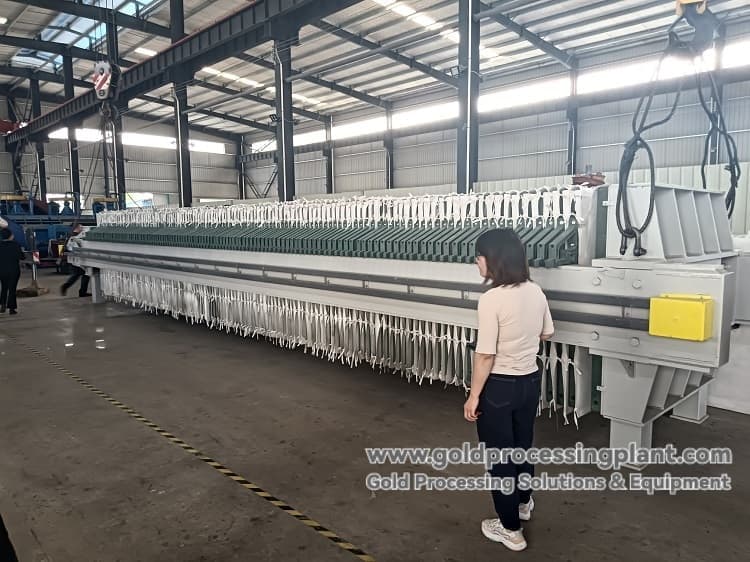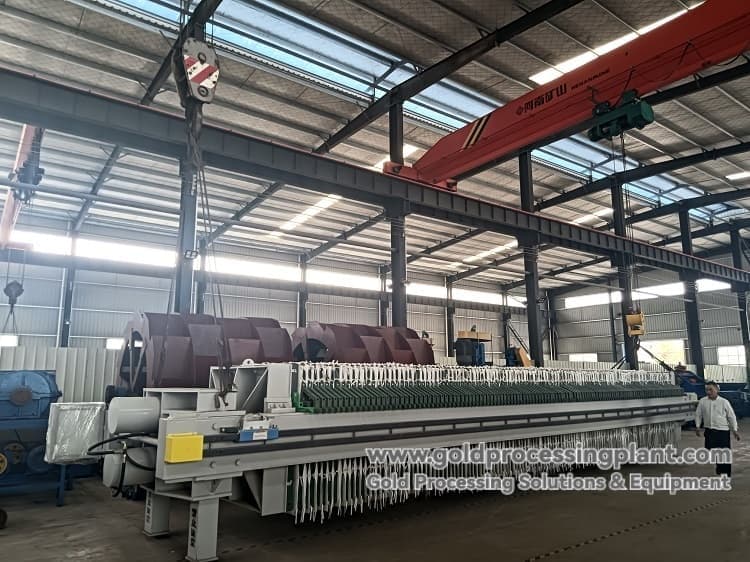Product Overview
Plate and frame filter press is the key equipment used for solid-liquid separation in mining, environmental protection, chemical industry and other fields, especially good at dealing with viscous and fine, difficult to filter materials. The equipment realizes efficient separation effect through high-pressure filtration, and is often used as the end mechanical dewatering equipment in the scenarios of gravel wastewater treatment, mineral processing tailings dewatering, sludge treatment, etc. It has become a reliable choice for solid-liquid separation process due to its good processing effect, wide adaptability, stable operation and other characteristics.
Structural composition of equipment
-
Main frame: it consists of thrust plate assembly, compression plate assembly, filter plate and filter cloth, support frame, etc., which constitutes a solid filter press working chamber.
-
Transmission system: including hydraulic station, cylinder assembly, active/passive sprocket, etc., providing power for pressing and loosening the filter plate group.
-
Control system: integrated electric control box, plate puller (automatic or manual), hydraulic control unit, to realize the automatic operation of the equipment.
Core working principle
-
Pressing: The hydraulic cylinder pushes the pressing plate to press the multi-layer filter plate and filter cloth to form a closed filter chamber.
-
Feeding filtration: The feed pump pumps slurry into the filter chamber, under pressure, the liquid (filtrate) is discharged through the filter cloth, and the solid particles are retained to form filter cake.
-
Unloading and loosening: After the filtration is completed, the hydraulic system unloads the pressure, and the pulling board device automatically or manually pulls the filter boards apart one by one.
-
Unloading: the filter cake is automatically discharged by its own weight, and the filter cloth is cleaned manually or automatically to complete a working cycle.
Technical features and advantages
-
Excellent adaptability: it can deal with all kinds of extremely fine, sticky and difficult-to-filter materials with stable and reliable filtering effect.
-
High solid content filter cake: with high working pressure ( 0.3-1.5 MPa ), it can form dry and hard filter cake with extremely low water content, and the subsequent processing cost is low.
-
Flexible configuration: the filtration area and the number of filter chambers can be flexibly selected according to the processing capacity, with a wide range of models.
-
Simple structure: intuitive and convenient operation and maintenance, stable operation and relatively small footprint.
-
Low-cost operation: compared with other high-pressure dewatering equipment, the initial investment and operating costs are more economical.
Technical parameter table (general range)
| Parameter item |
Parameter range |
Description |
| Applicable concentration |
≤ 10% suspension |
Solid weight concentration of feed slurry |
| Working Pressure |
0.3 - 1.5 MPa |
Regular operating pressure during filtration |
| Maximum pressure |
≥ 3.0 MPa |
Maximum pressure available from the hydraulic system |
| Number of chambers |
20 - 120 |
Depending on model and capacity, the total filter area is determined. |
| Cake moisture content |
Depends on material |
Typically less than 30%, depending on the nature of the material. |
Typical application areas
-
Mining industry: tailings dewatering and dry discharge in mineral processing plant, concentrate dewatering, washed sand wastewater treatment.
-
Chemical industry: filtration and washing of pigments, dyes, catalysts and other products.
-
Environmental protection: municipal sludge, industrial sludge dewatering and minimization.
-
Metallurgy: smelting slag, leaching slag dewatering and recovery.
-
Food/Pharmaceutical: Separation of fermentation liquid and crystallization.
Selection recommendations and use restrictions
-
Before selecting the model, you need to clarify: material characteristics (particle size, viscosity, PH value), processing capacity (dry sludge volume / slurry volume), the target cake moisture content, site conditions, etc..
-
Limitation of use:
-
The processing capacity is relatively small, not suitable for ultra-large-scale continuous production.
-
Filter cloth is consumable and needs to be replaced periodically.
-
Unloading and filter cloth cleaning usually require manual intervention, which is labor-intensive.
-
Work is intermittent, not completely continuous operation.
Maintenance







